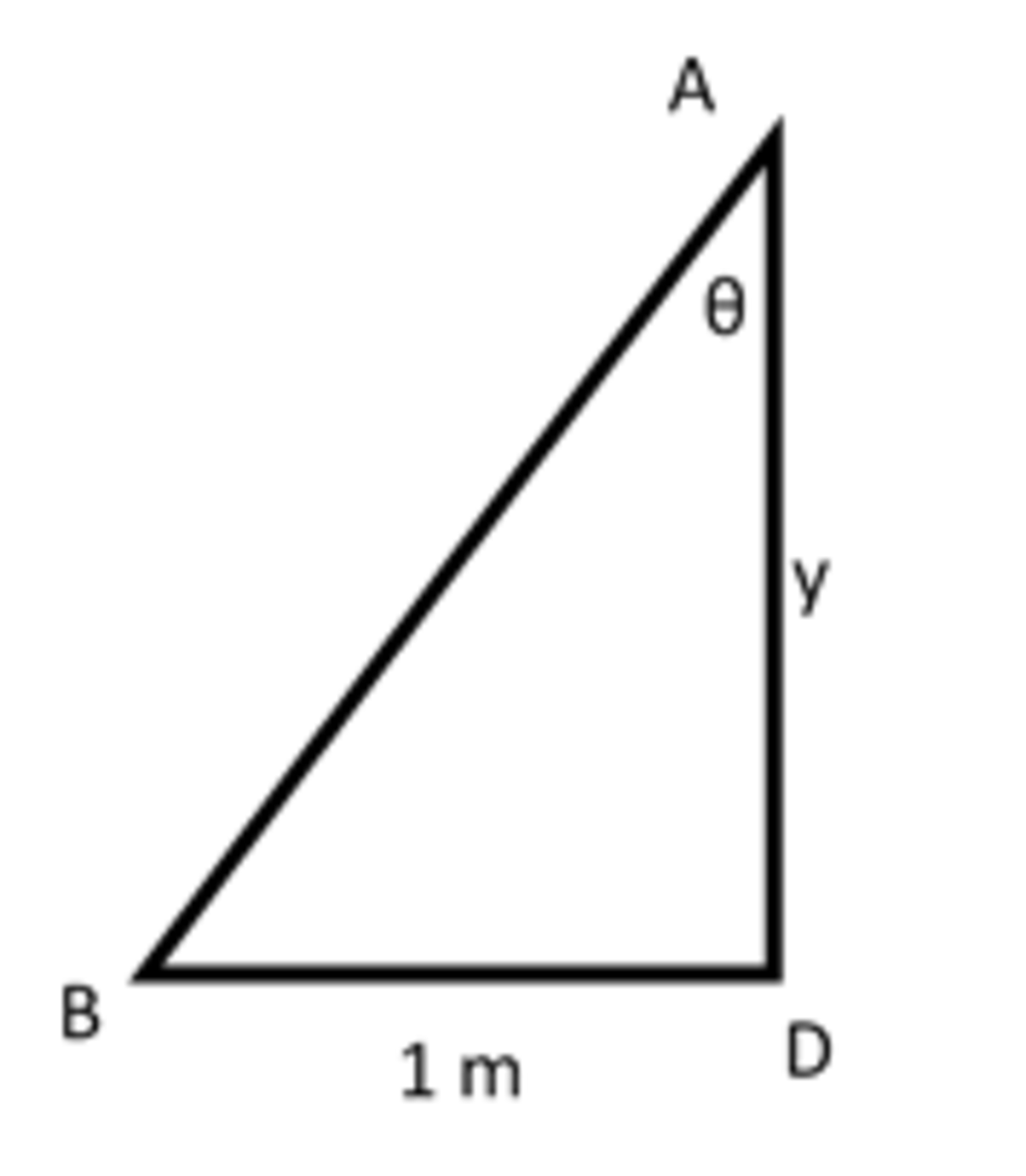A triangle made of beams
Isosceles triangle is constructed from three steel beams, with a fourth beam holding corner in a fixed position. Keeping the isosceles triangular formation intact, the equal lengths of beams and both increase with the same rate. Since beam is always kept at a fixed length of , this movement causes to shrink at a rate of .
As soon as becomes a right triangle, beam instantly detaches with a constant velocity and proceeds to move on an icy surface, parallel to the Earth's surface. In meters from , find the distance, , that the beam rolls before stopping.
Details and Assumptions
- Assuming that this hypothetical scenario takes place on Earth, take the acceleration due to gravity to be at .
- Assume that the coefficient of kinetic friction between steel and ice is .
The answer is 4.
This section requires Javascript.
You are seeing this because something didn't load right. We suggest you, (a) try
refreshing the page, (b) enabling javascript if it is disabled on your browser and,
finally, (c)
loading the
non-javascript version of this page
. We're sorry about the hassle.
The triangle ABC is an isosceles triangle. The side AB and AC rotate at angular speed
ω
. The length of side BC is constant.
The angle A is decreasing at a rate of
4
π
and it will be equal to
2
ω
because both the sides AB and AC are rotating at
ω
to reduce the angle A, that means we have,
2
ω
=
4
π
The side AB and AC rotate at angular speed
ω
. The length of side BC is constant.
The angle A is decreasing at a rate of
4
π
and it will be equal to
2
ω
because both the sides AB and AC are rotating at
ω
to reduce the angle A, that means we have,
2
ω
=
4
π
Now, consider the half triangle ADC (with D as the right angle) at a certain instant when the side BC is y distance away from the corner A and the angle BAD equals θ
In this triangle,
t a n θ = y 1
y = c o t θ
Also, we have the speed of the side BC = V = d t d y
Therefore,
V = d t d y = − c o s e c 2 θ d t d θ
Here, d t d θ = − ω
Hence,
V = ω c o s e c 2 θ
The instant when the angle BAC becomes right angled then the angle BAD becomes half of it that is 4 π
V = ω c o s e c 2 4 π = 4 π
and y = c o t 4 π = 1 .
Once the rod BC is detached it moves on an icy floor with a retardation of m a s s f r i c t i o n
f r i c t i o n = μ m g and hence the retardation a = μ g .
Since the retardation is constant, we can write
v 2 = u 2 + 2 a S
Here, v is the final speed that is zero, u is the initial speed that is 4 π , a is acceleration = − μ g and S is the displacement.
Therefore, the displacement S = 2 μ g V 2 = 3
and the distance from the corner A will be y+S = 1+3 = 4m.